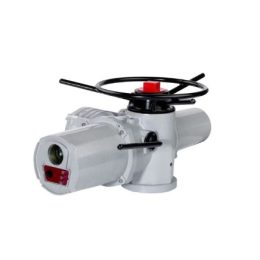“How a Butterfly Valve Works: Control Flow in Oil, Gas, and Chemical Industries”

A butterfly valve is a type of valve that can be used to control the flow of liquids and gases in a pipeline. It consists of a disc that rotates inside a circular body, allowing the flow to be either fully open or fully closed. This type of valve is commonly used in the oil and gas, chemical, and water treatment industries, where precise control of flow is essential.
=== How Does a Butterfly Valve Work?
When the valve is open, the disc is rotated 90 degrees, allowing the fluid or gas to flow freely through the pipe. When the valve is closed, the disc is rotated back to its original position, blocking the flow of fluid or gas. The disc is mounted on a stem, which is connected to an actuator. The actuator can be manually operated, or it can be automated using a motor or pneumatic system.
=== Advantages and Disadvantages of Open Butterfly Valve
One advantage of an open butterfly valve is that it allows for a high flow rate with minimal pressure drop. This is because the disc is positioned parallel to the flow, creating a smooth transition for the fluid or gas. However, one disadvantage is that it can be difficult to control the flow rate precisely, since the valve is either fully open or fully closed.
=== Advantages and Disadvantages of Closed Butterfly Valve
A closed butterfly valve provides precise control over the flow rate, since the valve can be partially opened or closed to adjust the flow. This allows for greater flexibility in the pipeline system. However, one disadvantage is that it can cause a higher pressure drop, since the disc is positioned perpendicular to the flow.
=== Choosing Between Open and Closed Butterfly Valve
The choice between an open and closed butterfly valve depends on the specific requirements of the pipeline system. In general, an open valve is better suited for applications where a high flow rate is essential, such as in pumping stations or water treatment plants. A closed valve is more suitable for applications where precise control over the flow rate is required, such as in chemical processing or industrial gas systems.
The Importance of Proper Butterfly Valve Selection
Proper selection of a butterfly valve is essential for the efficient operation of a pipeline system. The choice between an open or closed valve will depend on the specific requirements of the system, including the flow rate, pressure drop, and control requirements. Consulting with a qualified engineer or valve expert can help ensure that the best valve is selected for the job.
- “How a Butterfly Valve Works: Control Flow in Oil, Gas, and Chemical Industries”
- Maintenance Of Idle Valves
- Maintenance of natural gas pipeline ball valve and common troubleshooting methods
- Understanding the Industrial Applications of Socket Welding Check Valves
- Trunnion Valves: Structure and Function Explained
- Can Stainless Steel Flanges Be Corrosion Resistant?



